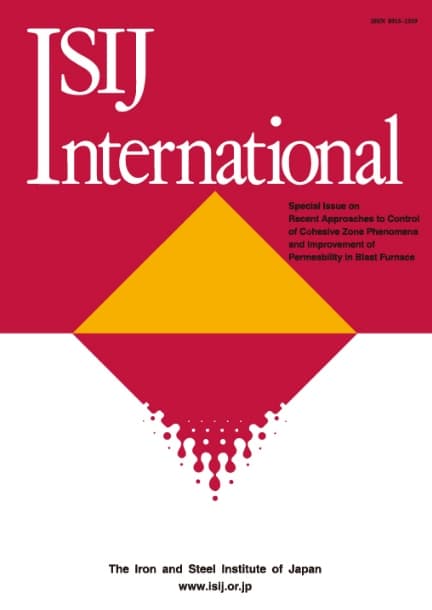Structural Analysis Methods for Characterizing Multicomponent Melts and Glasses Processed at High Temperatures
Shigeru Suzuki, Sohei Sukenaga, Tsuyoshi Nishi, Kozo Shinoda, Hiroyuki Shibata
pp. 767-778
抄録
Recent structural-analysis research was reviewed for characterizing multicomponent melts and glasses processed at high temperatures. Multicomponent melts and glasses are often formed in slags during pyrometallurgical processing and the vitrification of highly radioactive wastes from nuclear power plants. Melt and glass physical properties were interpreted based on structural analyses using different methods. For example, the viscosities of different molten-silicate compositions were explained based on Raman and magic-angle-spinning magnetic resonance (MAS NMR) spectra. In addition, the thermal conductivities of multicomponent vitrified glasses were examined based on the structures elucidated using MAS NMR spectroscopy. X-ray absorption spectroscopy, which provides information about element chemical states, is used to analyze the local structure around specific elements in both melts and glasses. These studies show that structural analysis methods provide important information for designing and controlling melts and glasses processed at high temperatures. The structures characterized using different analysis methods were presented to elucidate the physical properties of multicomponent melts and glasses processed at high temperatures and propose prospects and directions for further research of process-oriented methods.
他の人はこちらも検索
ISIJ International Vol.63(2023), No.5
ISIJ International Vol.63(2023), No.5
ISIJ International Vol.63(2023), No.5











 ) and increments in the true stress in the Lüders band (
) and increments in the true stress in the Lüders band ( ) to a lower yield stress (
) to a lower yield stress ( ) can be described as
) can be described as  irrespective of the amount of deformation-induced martensite in the band or crystal structure of the steel. The inclination angle of the Lüders front with respect to the tensile direction changed from 55° to 90° with a reduction in the measured strain ratio (−εyy/εxx) in the Lüders band, and the change agreed with the tendency calculated by the plasticity model, assuming the pure shear occurs under the minimum shear strain criterion. SEM observations of the sheet surface and the front cross-section in the TRIP steel showed the formation of multiple inclined ~20 µm-wide shear deformation zones that accompanied a reduction in thickness. All the observed geometrical characteristics of the Lüders front were qualitatively described by a mechanism involving minimizing the misalignment from the fixed tensile axis caused by ‘shear’ deformation.
irrespective of the amount of deformation-induced martensite in the band or crystal structure of the steel. The inclination angle of the Lüders front with respect to the tensile direction changed from 55° to 90° with a reduction in the measured strain ratio (−εyy/εxx) in the Lüders band, and the change agreed with the tendency calculated by the plasticity model, assuming the pure shear occurs under the minimum shear strain criterion. SEM observations of the sheet surface and the front cross-section in the TRIP steel showed the formation of multiple inclined ~20 µm-wide shear deformation zones that accompanied a reduction in thickness. All the observed geometrical characteristics of the Lüders front were qualitatively described by a mechanism involving minimizing the misalignment from the fixed tensile axis caused by ‘shear’ deformation.